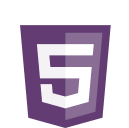Today we’re going to talk about pay per click (PPC). Digital marketing, combined with technology, brings innovations every day. To further refine your strategy, it’s important that you understand various metrics and terms that you’ll see on a daily basis.
In this article, we’ll understand the role of PPC in your strategy, what difference it can make to your business and what the difference is to CPC. As well as how to apply it and, of course, measure and optimize the results. Read on!
What is Pay Per Click (PPC)?
Known as “pay per click”, PPC is a way of advertising on digital media. It allows you to measure the value of each click and pay for it on your content, whether on websites, social networks or other online media.
PPC is directly linked to paid traffic. This allows you to drive more qualified leads to your business.
To put it simply, it works like “bucket fishing”, i.e. there will be an audience with a level of qualification, ideal profile and greater chance of purchase that will be reached if you pay for it.
It’s a strategy that can generate more results in the short term, as it allows you to appear first when your customer is looking for something in your niche, for example.
In general, sponsored ads appear above the organic results. Then the sponsored ad appears like this 👇🏽
Pay per click is a strategy that allows you to monitor your spending more closely. This is because you only pay if someone actually clicks on your ad. This way, you can also achieve more visibility without spending money on it.
How does the PPC work?
Pay per click (PPC) can be used on a variety of platforms, but it is most commonly used on search engines such as Google and Bing, because the way people search is different from social networks.
Even so, it’s a practice that can be used on all digital platforms that allow the presence of ads. I’m going to summarize what you need to do on each platform so that you can start exploring the possibility of setting up a PPC campaign.
Check it out in 5 steps:
- Create a professional account on the desired platform;
- Ad creation and planning;
- Definition of the spending ceiling per click;
- When the campaign starts, your ad will compete for space with others in an auction system;
- Payment according to the number of clicks you receive.
These are the basics, but you need to pay attention to specific strategies according to the search engines you’re using, okay?
What is the difference between CPC and PPC?
Perhaps this was one of the first questions that crossed your mind, mainly because they have similar names: Cost Per Click (CPC) and Pay Per Click (PPC).
In practice, many people even use the two as synonyms. However, there are some differences that may be necessary for you to understand and delve deeper into this world of digital marketing.
- PPC refers to the advertising strategy model in which each click on an ad is paid for. It therefore encompasses various platforms and ad types and can be used as an umbrella term.
- CPC, on the other hand, refers to the specific metric used to measure the cost of each click received on the ad. In other words, if the campaign received 100 clicks and cost R$100.00, the cost per click was R$1.00.
Why use PPC?
According to an IBM report, around 2.5 quintillion pieces of data are produced worldwide every day. That’s a lot of content to sift through, select, navigate, so the easier the path for your lead to you, the better.
In this sense, PPC campaigns allow you to target ads to filter out exactly the audience profile you want to relate to. With the right keywords, your chances of getting good results are greatly increased.
Search engines like Google are the main search tool for people looking for products and services. During the Think Commerce event, Google’s own research was released, reiterating Brazilians’ habit of researching before buying something.
Even if the person chose to go to a physical store afterwards.
Although organic traffic is very strong at Google, it is estimated that Google alone earns more than 162 billion dollars a year through its advertising platforms, including Google Ads.
Source: Visual Capitalist
Is there an ideal ad format?
The answer to this question is: it depends. Before even defining a format, you need to look at some important points and criteria to understand your audience and how best to approach them.
Understanding characteristics such as demographics, interests and behaviors will help you understand the best language – written and visual – and how to meet their interests. This makes it easier to persuade and convert!
You can ask yourself a few questions, such as:
- How old is this person?
- When you search the web, what are you looking for? Information? Entertainment?
Remember that your ads are intended to insert themselves naturally into your target audience’s routine. That’s why it’s very important to understand their behavior and consumption habits.
Ad types
We’ve brought you some types of ads so you can analyze which one best fits your audience’s profile. Check out the most commonly used:
Search Ads
When you do a search on Google, it’s what appears at the top of the page or on the sides in some cases. This way, the user has no trouble finding the company, just click and hire.
In the example below, if I were looking for someone to clean my upholstery, there would be a high chance of conversion. That’s because hardly anyone goes beyond the first search result.
Display ads
Do you know when you’re browsing a website or looking for something that has nothing to do with you and a pop-up or banner with an Ad appears?
These are strategies that “follow” consumers in their habits. Generally, the ads you’ll see of this type are fully correlated with research already carried out and consumer habits. They work very well to increase brand visibility.
Social Media Ads
These appear in the middle of your interactions on social networks, be it Instagram, Facebook, Twitter, LinkedIn or many others. They usually look like normal posts, but have a Sponsored notice.
Below you can see two ads on Instagram, the first in the stories and the second in the feed.
Video Ads
The video format is particularly popular on YouTube, but it can also be used on other social networks that support this format, such as Instagram Reels and Tik Tok videos.
Conclusion
Investing in Pay Per Click (PPC) campaigns can transform your business’s digital presence, offering measurable and rapid results.
In addition, the flexibility in controlling the budget and the ability to measure the return on investment make this strategy one of the most powerful in digital marketing.
By applying the right strategies and making continuous adjustments based on data, you will be well placed to outperform the competition and achieve your marketing goals.
Remember, PPC is not just a customer acquisition tool, but an integral part of a holistic marketing strategy that can complement other forms of digital advertising and SEO efforts.
So always be aware of market trends and adapt your campaigns as necessary to get the best possible results. See you next time! 😉
Read also: Search Engine Marketing: what is it? How to do it?





